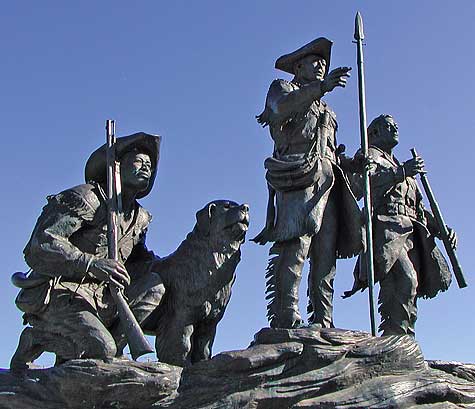
Monture Creek flows for twenty-four miles from the mountains in an area that borders the Bob Marshall Wilderness in Montana.  Now a state fishing access location, it was the camp site for the men of the Lewis and Clark expedition who bunked down there on July 5, 1806.
Now a state fishing access location, it was the camp site for the men of the Lewis and Clark expedition who bunked down there on July 5, 1806.
At another campsite less than a year before, a spooked buffalo crashed into the encampment and, according to accounts, was “within eighteen inches of the heads of some of the men who lay sleeping.” The crazed beast careened around the camp, crashing into gunstocks and bending rifle barrels with its huge hooves. Were it not for “Seamen,” Meriwether Lewis’ Newfoundland, it’s likely men would have been seriously injured, if not killed. Instead, Seamen rushed towards the bison and forced him to change direction. Both Lewis and Clark wrote in their journals that the men of the expedition owed their lives to the dog that day. As a gesture to honor his dog, Lewis named a northern tributary of the Blackfoot River “Seamen’s Creek,” the same river known now as Monture Creek.
Several statues and monuments have been dedicated to Seaman, the adventurous dog who helped explore new land. The one seen here was created by the late Montana artist, Bob Scriver, and is located at the Broadwater Park Overlook at the confluence of the Sun and Missouri Rivers at Great Falls, Montana.
